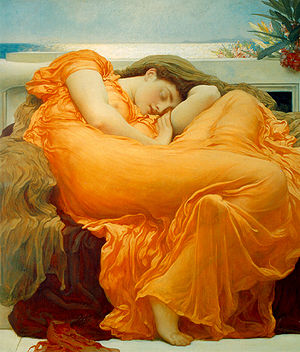Pre-Raphaelites
The Pre-Raphaelites (Pre-Raphaelite Brotherhood, PRB) were a Victorian era (1848 - late 19th Century) group of English artists which later grew to include poets and writers. The paintings of the Pre-Raphaelites often featured an extremely high degree of realism (what would now be called "photorealism"); religious and mythical themes; and pictures that seem to tell a story, or a part of a story (with titles that often confirm that interpretation). They wanted to return to the Quattrocento Italian and Flemish art.
Their central doctrine was that artists should seek to represent the natural world. They believed that the only great art was before high renaissance, before Raphael... They were aimed to reform art by rejecting practices of contemporary academic British Art... Their subject matters were from medieval tales, bible stories, classical mythology, and nature. [1]
Famous Pre-Raphaelite artists included William Holman Hunt (founded the group in 1848), Dante Gabriel Rossetti, John Everett Millais (1829-1896), and Edward Burne-Jones. William Morris Hunt, founder of the Arts and Crafts movement, and art critic John Ruskin were loosely associated with the group. John William Waterhouse was influenced by the Brotherhood.


